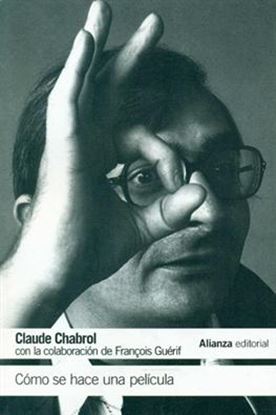

TODOPODEROSOS: CON MI PELI NO TE METAS
Cine y humor de la mano del podcast cultural con la comunidad más sólida de España.
El primer libro de Todopoderosos.
Todos tenemos películas supuestamente malas que no podemos dejar de ver una y otra vez. Cintas denostadas por público y crítica que, por diversos motivos, se nos han quedado pegadas, se han ganado un lugar en nuestro corazón.
Armados de argumentos, referencias y sentido del humor, Juan Gómez- Jurado, Rodrigo Cortés, Javier Cansado y Arturo González-Campos defienden en este libro este tipo de películas. A través de joyas desconocidas, placeres culpables, obras nostálgicas y bodrios divertidísimos, nos invitan a reconectar con el cine más allá de puntuaciones y tendencias efímeras para vivirlo como lo que es: una experiencia intelectual pero, sobre todo, emocional.
900
720
COMO SE HACE UNA PELICULA
Fruto de una serie de entrevistas entre Claude Chabrol y Francois Guérif, este breve compendio realiza un repaso integral al proceso de Cómo se hace una película. Matizado en todo instante por la ácida y personal visión del director de El bello Sergio, El carnicero, El grito de la lechuza, La ceremonia o La flor del mal, el contenido de estas páginas toca desde los primeros pasos de la aventura que supone toda realización cinematográfica -la elección del tema, la escritura del guión, la búsqueda de un productor- hasta los últimos -la explotación y recepción del film-, pasando, naturalmente, por todos los problemas y detalles que lleva aparejados el rodaje, incluyendo la dirección de actores, las cuestiones técnicas y la función de cada uno de los que en aquél participan.
900
720
AVENTURAS EN EL TIEMPO
Cuando se tiene la posibilidad de cambiar la realidad, aparecen mundos insospechados y universos alternativos en los que la mente del creador no tiene límites. Eso, al menos, debieron pensar muchos de los protagonistas que aparecen en estas páginas. Guionistas, directores de películas o dibujantes de cómics que echaron a volar su imaginación para inventar futuros lejanos, universos paralelos o bucles temporales. Doc Pastor nos acerca a algunas de las mejores películas, cómics o videojuegos que tratan el género de los viajes en el tiempo, siguiendo la estela de su anterior libro y completándolo con nuevas y atrevidas propuestas que han sido abordadas por el cine y la literatura desde diferentes puntos de vista. Gracias al cine y a títulos como Frequency, Atrapado en el tiempo, Deadpool 2 o Lightyear hemos logrado llegar a los sitios más insospechados a través de paradojas temporales, bucles infinitos y viajeros que se trasladan en extraños vehículos. Pero la ficción también nos ha demostrado que no es indispensable una máquina para viajar, porque puede haber infinitas maneras de hacerlo, como el mítico DeLorean de la trilogía Regreso al futuro.
850
680











